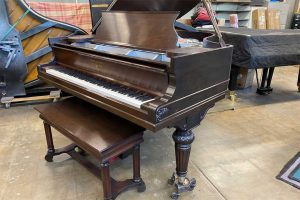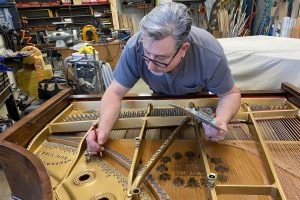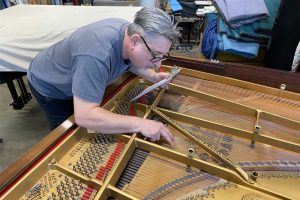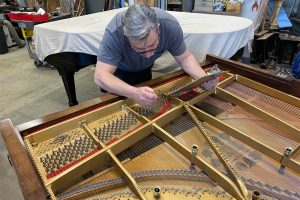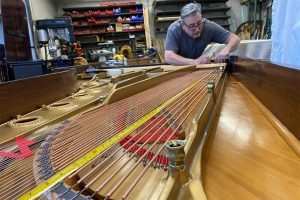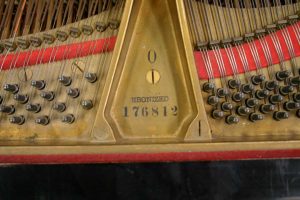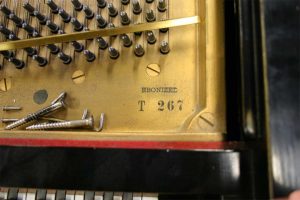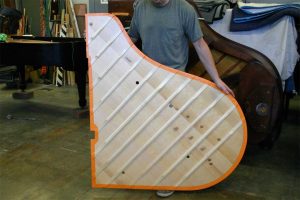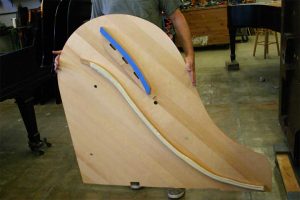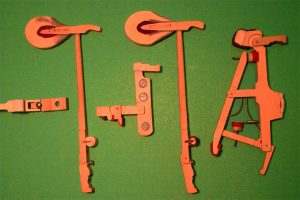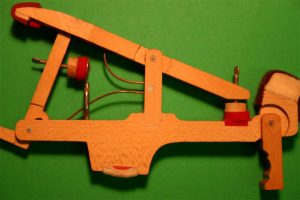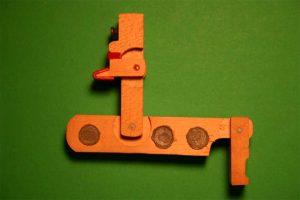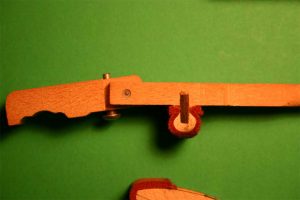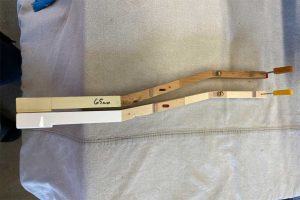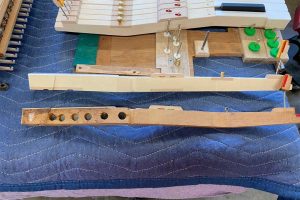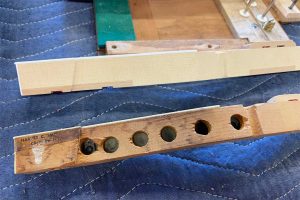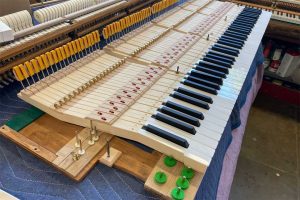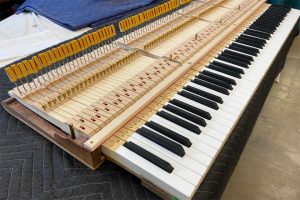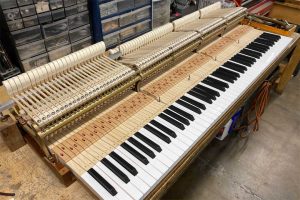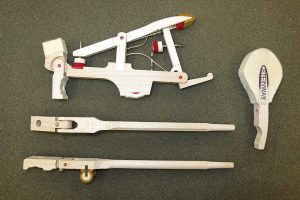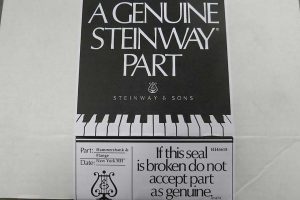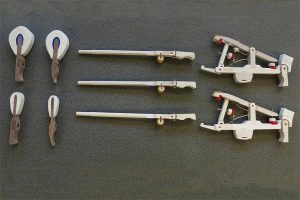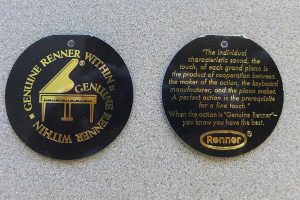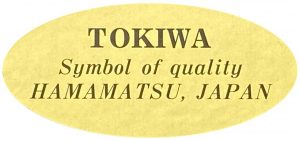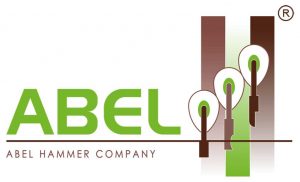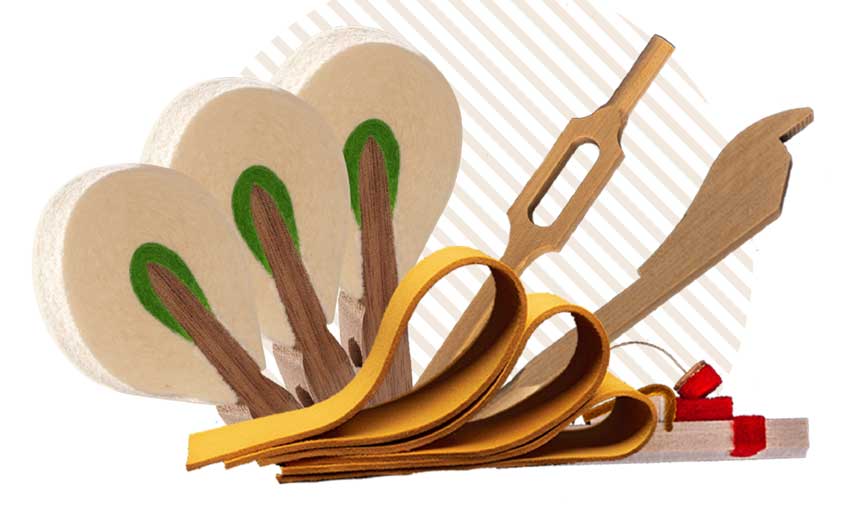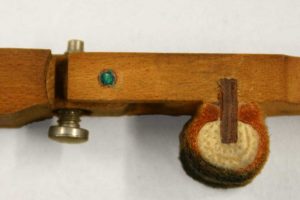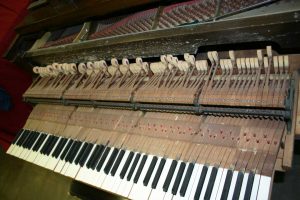
Piano Service Rates and Answers to Commonly Asked Questions
How much does it cost to tune my piano?
How much will it cost to rebuild my piano?
What does it cost to refinish my piano?
Do you do appraisals, estimates, and evaluations?
Is my piano worth restoring?
How do I identify my Steinway piano?
How long does it take to restore my piano?
Which is the best piano made?
Should I replace the soundboard in my piano?
Are all soundboards created equal?
Am I ruining my Steinway if I change the soundboard?
What are Steinway Teflon action parts, and why don’t they work properly?
What exactly is a “new keyset?”
What kind of replacement piano parts do you use?
Why does my Steinway and Sons piano play so heavy?
Why are all the keys sticking on my Steinway piano?
All the parts on my piano are original…why do I need to change the parts?
My piano was “rebuilt” about 20-30 years ago, but it doesn’t sound or play right…what’s wrong?
I found a GREAT deal on a used, rebuilt Steinway…should I buy it?
If it is so hard to find a well restored vintage Steinway, what should I do?
How do I choose a quality piano restoration company?
How much does it cost to tune my piano?
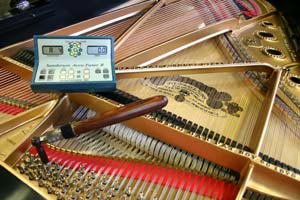
Some of the most commonly asked questions about our services relate to piano tuning and how much it costs. The simple answer to the question is that all pianos differ, and the rates will vary. Piano tuning is exactly what it implies…the tuning pins will be moved (with a tuning hammer), and set to the appropriate tension in order to produce the correct sound.
The way a piano plays is NOT affected by normal piano tuning. In fact, the action (or mechanics) of the piano are not regulated or removed during the course of normal piano tuning. If the action of the piano has a problem before the piano is tuned, it will have the same problem after tuning unless repairs or regulation are performed to correct it.
Any problems a piano may have will be identified, and the customer will be informed of any issues that need to be addressed, either before the tuning begins, or within the course of the tuning as they arise.
- On well-maintained pianos that have been tuned regularly (every 6 months) and do not require repair or regulation, the typical service call tuning charge is $225 to $275 within our normal service area.
- Pianos that have not been tuned for at least a year or two, or have undergone a drastic climatic change, typically require what is called a “pitch raise” (basically a double tuning), and the rate will be between $275 and $375 within our normal service area.
- Pianos that have not been tuned “for years,” or that do not play properly, should first be evaluated to insure that the instrument is capable of maintaining a proper tuning, and that it is worth putting the money into, to bring it back to shape (see Is my piano worth restoring? and related Q&A below).
How much will it cost to rebuild my piano?
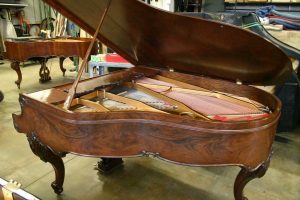
This is a fair and complex question. For the most part, we can perform restorations to many differing levels of budget and customer need…within reason.
For example, we have seen MANY older pianos come through our studio where a basic interior cleaning, action regulation, tuning and voicing is all that is needed to restore the piano to a wonderful playing and sounding condition. These services can run anywhere between $750 and $3500 depending on the extent of the work.
In other cases such as basic interior rebuilding which includes, restringing, damper work, hammer replacement, regulation, tuning and voicing, the prices can range between $5500 and $15,000. This type of rebuilding is commonly used on pianos that are younger and have had lighter use through the years, so as to put them into satisfactory condition, without going way beyond the value of the piano when it is complete.
The typical interior restorations we see for vintage Steinway and Sons pianos, from say 1920 to the more current production models, typically range in the $15,000 to $29,000. These pianos will generally need and receive new pinblocks, soundboard repairs, bridge repinning, new Steinway and Sons Factory original parts which are made at the German Renner Factory acquired in 2017 and now owned by Steinway and Sons, capo and agraffe work, keytop replacement or ivory repair, key repairs, damper action replacements, and thorough regulation and voicing.
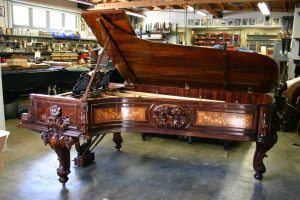
A top-end, full-blown interior restoration of a very old (pre-1920), or especially worn-out Steinway piano can reach upwards $50,000 to $60,000. In addition to the typical Steinway piano restoration above, these pianos will include: new soundboards with new bridge caps, new keyset duplication with geometry corrections, keyframe rebuilding, rim reconstruction and repair, complete new damper and pedal systems, and more intensive Concert voicing and regulation work.
Still, this restoration, although expensive, is by far a better bargain than the purchase of a new hand-made, high-end quality piano. Most start at $45,000 for the smallest of baby grands and reach upwards of $250,000 for concert grands and art-case style cabinetry!
What does it cost to refinish my piano?
Piano refinishing costs will vary depending on the size, color, texture and quality of the finish being applied. From the smallest upright piano with the most basic finish applied, prices will start at $4,500, and go up to about $12,500 for full sized Uprights or pianos with very intricate cabinetry.
Typical mid-sized parlor grands, in a basic ebony-satin finish, with hardware plating and case repairs, generally cost between $7,500 to $12,500. As the pianos get bigger, or the finishes become more exotic (such as high-gloss, or ornate carvings throughout), costs are generally between $12,500 to $19,500.
We also offer Bespoke Editions of colors, various veneers, and one off creations for our clients so they truly have a unique, one of a kind creation. Pricing will vary based on the intricacies of each Bespoke Edition.
Each and every piano is different and must be carefully evaluated in order to accurately estimate a refinishing cost.
Do you do appraisals, estimates, and evaluations?
We are often asked to do a piano estimate or evaluation for repairs. This is one of the most important steps an owner can take in order to insure that they are spending their money wisely on an instrument, and whether or not a restoration should even be performed.
In the course of an evaluation, the piano is looked over closely for its current condition and its potential for restoration. Components given great attention include: the soundboard, plate, action and damper system, pinblock and belly, pedals and trapwork, and finally, the finish and veneers of the instrument. Based on these examinations, a rough estimate of the instrument’s current retail and wholesale value are determined, as well as the costs for restoring the instrument to the highest level of the customer’s expectations.
A formal proposal is then compiled and emailed to the customer. Typically the rates for an evaluation are approximately $250 to $350 (within our normal service area).
With advance notice, we also accept pianos brought directly to our facility by professional piano movers from around the country and throughout the world. We have a minimum $350 shop space fee that will allow the piano to stay in our facility for up to 2 weeks so we can thoroughly evaluate the instrument and prepare a formal proposal.
Is my piano worth restoring?
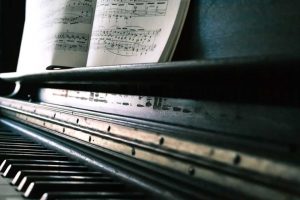
This is by far our most commonly asked question. After all, restoring a high-quality grand piano is an expensive endeavor indeed. But with the cost of new high-end, hand-built pianos starting at $75,000 (for the smallest baby grands), and going upwards of $250,000+ (for concert grands and art-case style cabinetry), the opportunity to restore an older, vintage Steinway and Sons, Mason and Hamlin, Bösendorfer, Baldwin, etc., is by far a better bargain! In fact, in many cases, the results of restoring a vintage hand-made piano exceed the standards of some brand new pianos.
If your piano does not have name recognition on the fallboard, then a thorough evaluation is needed in order to insure that the money you spend, does not far outweigh the piano’s value, and that the restoration will produce a piano that will be playable and enjoyable for years to come.
The fact of the matter exists that there are MANY good quality, reasonably priced, middle-of-the-road, brand new pianos out there that many people could (and should) buy. This leaves the resale value of many older, lesser-known pianos well below what it costs to do a proper restoration. It is up to the customer at that point, to decide whether or not restoring their older piano is worth it to them. At least you will be armed with the facts in order to make the decision that is right for you.
How do I identify my Steinway piano?
These pictures illustrate where to look for the Serial and Model Number and Part Number for your Steinway and Sons grand piano. These numbers can be easily identified on the plate, underneath the music rack (which simply slides out of the piano). If the numbers are not on your Steinway, it has more than likely been refinished and carelessly left off the instrument by the refinisher. Not to worry—Part Numbers and Serial Numbers are in multiple places on Steinway instruments—it will just take a little more effort to find them! The word “Ebonized” indicates that the piano was destined to have a black finish.
How long does it take to restore my piano?
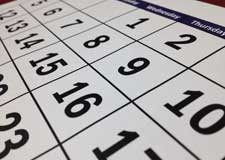
The vast majority of our piano restorations that do not include refinishing of the instrument take approximately 4-6 months to complete. Of course, every piano, and every restoration are different. If a piano is to be refinished, have a new soundboard and new keyset installed, and restored to the highest degree, the process could take as long as 9-14 months to finish.
Which is the best piano made?
This is a very commonly asked question. The best answer is that there is no “one” piano that is the best. There are numerous high quality, hand-made grand pianos that can be considered extraordinary. Following is a short list of just a handful of the many piano makers we consider exceptional.
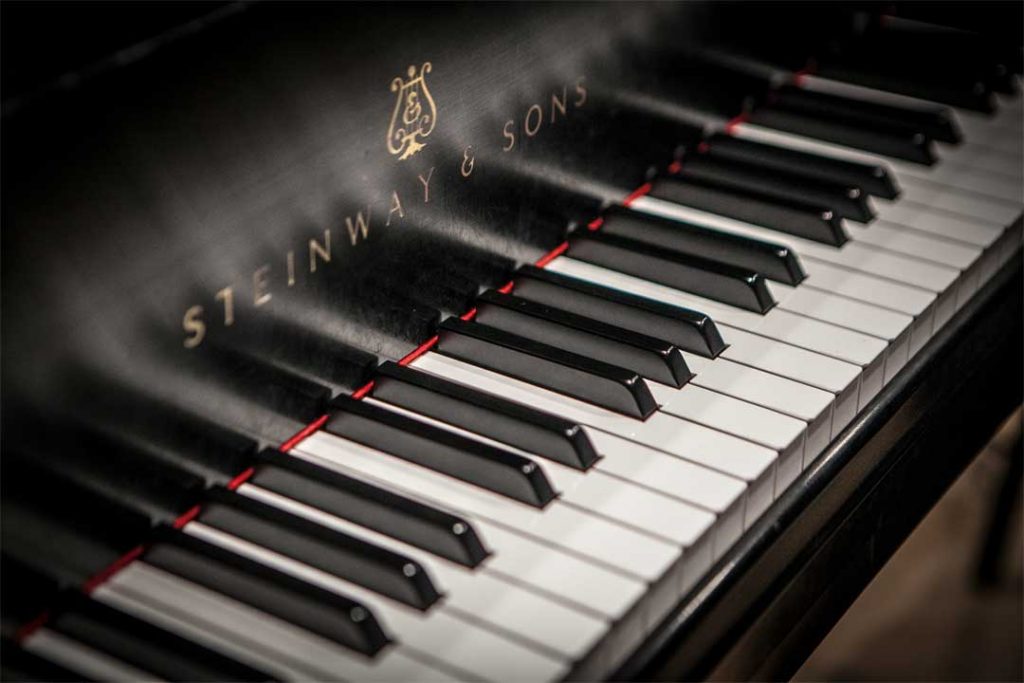
Steinway and Sons is the most well known instrument ever produced, and has a proven track record of building concert level instruments. With this quality, comes a reputation and respect that makes Steinway the benchmark for all others to follow. Founded in 1856, Theodore Steinway took the art of piano construction into the modern era, establishing patents, that to this day, other manufacturers have adopted and used as the standard for piano building.
In 2015, Steinway and Sons introduced the SPIRIO reproducing player system that has revolutionized the player piano industry. In 2018, Steinway introduced the SPIRIO | r system which enables owners to record and edit their own piano performance on their Steinway piano. Learn more about SPIRIO and SPIRIO | r and how we can help calibrate and maintain these awesome pianos for you with our factory trained service procedures.
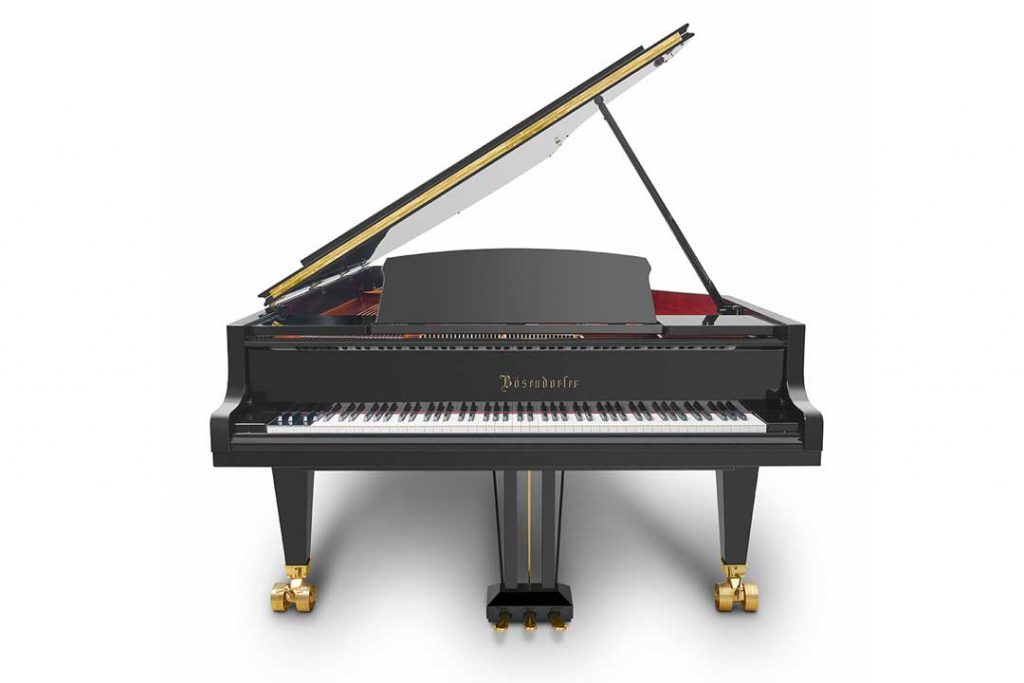
Bösendorfer, a uniquely designed and built Austrian piano, has an impeccable reputation for its power and tone, and for the extraordinary workmanship that goes into making each instrument. These pianos are built in the “old-world” tradition of hand craftsmanship even to this day.
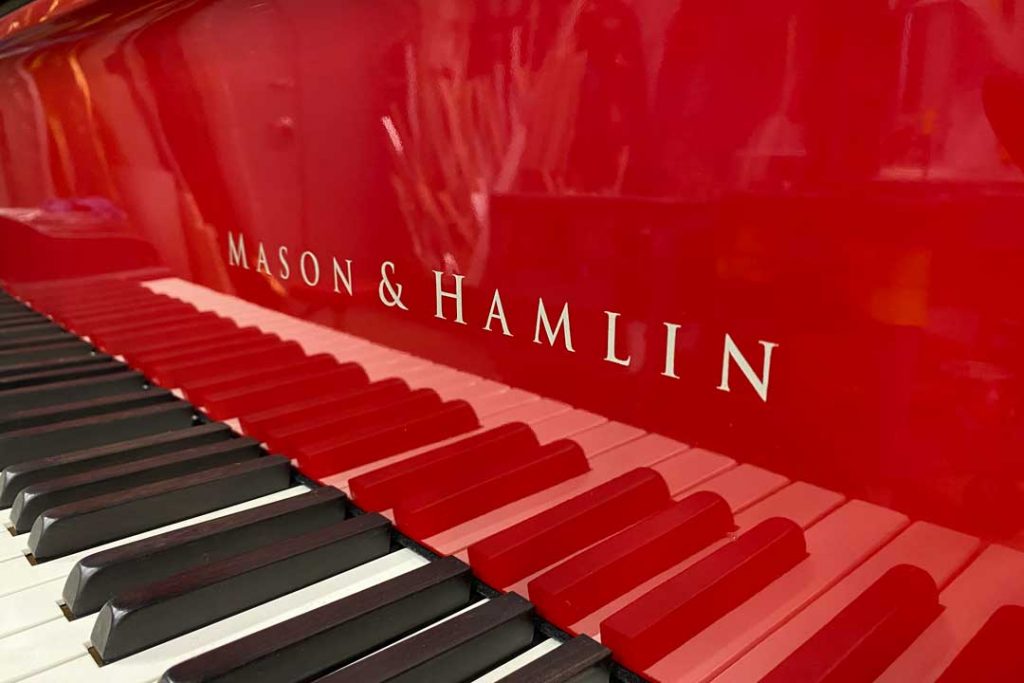
Mason and Hamlin, built in Boston, MA, was established in the 1800’s. They were Steinway and Sons most major competition, not only in piano building, but on the concert stages of America for many, many decades. Their patented Tension Resonator System utilized steel bars that kept the frame of the piano pulled together and under tension.
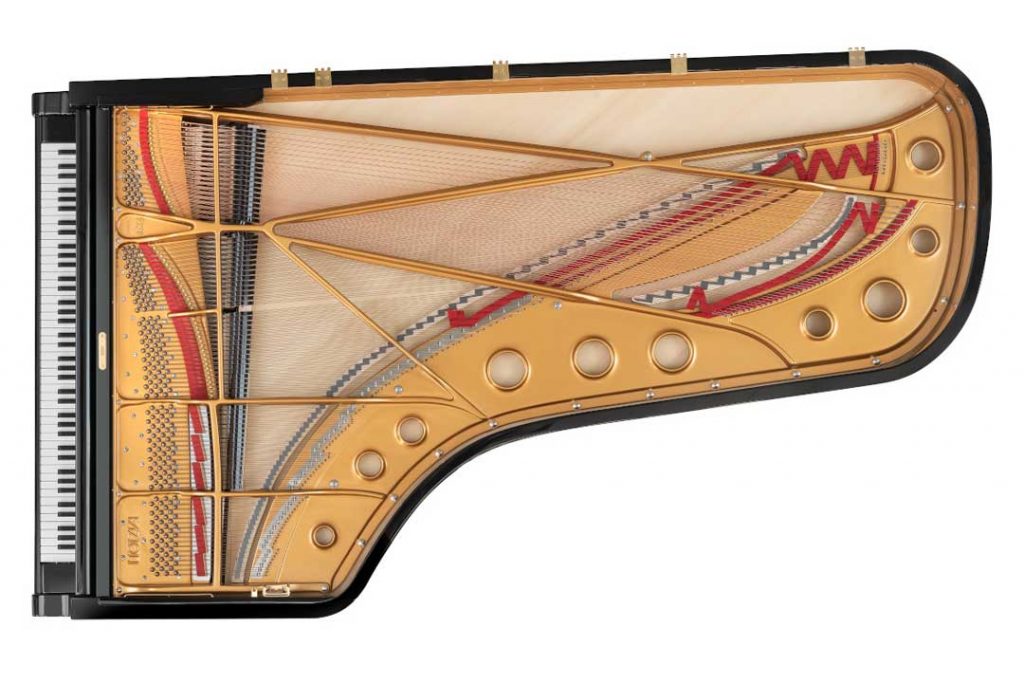
Fazioli Pianos was founded in 1981 in Sacile, Italy by Paolo Fazioli. Inspired as a little boy by the complexity of the pianoforte, his vision was imagined early in life to build a world class piano. His achievements over the last 4 decades prove his skills and ambitions were not wasted. His small group of master craftsmen now build what are considered the world’s finest pianos, with an attention to detail that is unmatched anywhere in the piano industry. His pianos are absolutely amazing in fit and finish, and are a revelatory experience to play
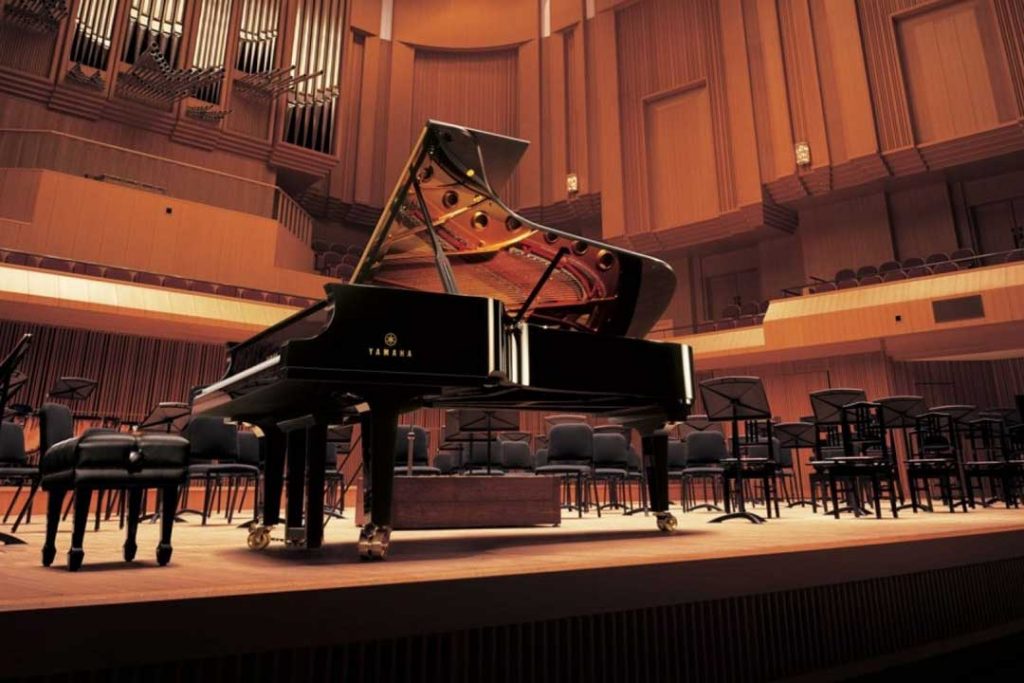
Yamaha, Japan’s oldest and most prolific piano maker, is one of the best dollar-to-value ratio pianos ever produced. Incorporating all of the most sought after technological break-throughs in piano building, these pianos are truly spectacular in fit and finish. Yamaha has also taken the player piano industry by storm. The Yamaha Disklavier player piano system is one of the best reproducing systems on the market, and accounts for a large portion of their new piano sales. The Disklavier system is only available as a factory installed option on their new pianos, and is not available to install on any other pianos.
Should I replace the soundboard in my piano?
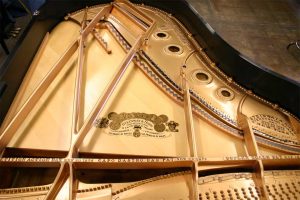
We are firm believers in the installation of new, dimensionally duplicated soundboards into high quality instruments such as Steinway and Sons pianos. The nay-sayers that believe one must keep the original soundboard of an instrument at all costs are unrealistic in their expectations and are not facing the basic laws of nature concerning piano soundboards.
Pianos are subjected to 12-15 tons of pressure in the strung and concert pitch condition, and the “bearing” or pressure exerted through the bridge cap to the soundboard panel is on average 250-400 lbs of weight. That is the weight of 2-3 fully grown men standing on a soundboard continually for a piano’s lifespan. To expect a piano soundboard that is 50-150 years old to retain its original crown (curvature) in the panel is ludicrous.
This enormous pressure is also spread throughout the entire body of the instrument, and there is a great force at work to push and pull the inner and outer rims, belly, and soundboard apart, stressing critical glue joints.
The effects of this force are even more readily observed once the old board is removed from the piano. All vintage Steinway soundboard panels, when removed, are usually flat as a table, and, more often than not, reversed in crown.
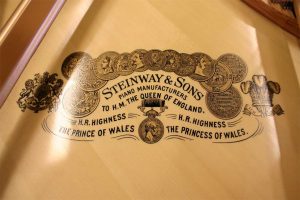
If the new soundboard that is to be installed, is duplicated to the exact standards of the original soundboard being removed, then the piano will sound as it did when it was new. We are not here to reinvent the wheel, or second-guess Steinway’s piano building processes. When a new board is installed, it is as the original was.
All this being said, we also believe that considering the expenditure involved in the installation of a new soundboard, it is definitely not for everyone. If the budget for the restoration of the piano cannot absorb the cost of a new board, then a thorough shimming, gluing and preparation of the old board is a must. Replacement is generally reserved for those that expect the ultimate in tone reproduction from their vintage Steinway.
The Steinway factory restoration facility will, as a matter of standard operating procedures, replace all soundboards in pianos in their restoration facility that are more than 50 years old.
Are all soundboards created equal?
One of the most disturbing trends we are now seeing in the cheap wholesale piano restoration business is the installation of low-grade, generic soundboards into high quality pianos such as vintage Steinways. These boards are made from a “standard” generic pattern, meaning they are NOT duplicated to the specifications of the original soundboard that is being removed from the instrument.
Board thinning (or diaphragmization), rib material, bridge notching, and placement are all being set to this standard in order to speed up production and cut down costs. These soundboards are very inexpensive, but have no value in high end piano restoration. We have even seen these cheap soundboards available for purchase on eBay!
Many well known rebuilders will purposely alter a vintage Steinway’s soundboard design, in order to (in their minds) improve the tonal quality of a vintage Steinway piano.
When we replace a soundboard in a vintage Steinway, great care is taken to reproduce the diaphragmization, rib position and material, and bridge locations to exactly match the dimensions of the original board removed from the piano. In our opinion, this is the ONLY way to accurately ensure that the piano will sound as it did when it was new, and faithfully reproduce the tone that piano makers such as Steinway and Sons originally intended for the era of the piano being restored.
Am I ruining my Steinway if I change the soundboard?
ABSOLUTELY NOT! But only if the new soundboard is duplicated to the exact characteristics of the original board that is removed. Many rebuilding companies prefer to think they know better than the original designer’s intent when producing a new soundboard panel, and they introduce their own rib patterns and changes into the bellies of Steinway and other high end piano maker’s instruments to reflect those beliefs.
In properly built and constructed Steinway and other high-end pianos, our protocols DO NOT allow these egregious changes, and our new soundboards and bridge configurations will be a reflection of what was originally constructed and removed from the instrument.
What are Steinway Teflon action parts, and why don’t they work properly?
In the 1960’s, Steinway developed Teflon® action components which were used from that time until the very early 1980’s. These components feature Teflon circles around the centerpins of all the moving parts of the action components which include the hammershanks, wippens, damper underlevers, and parts of the sostenuto system and lyre. There were 2 sizes of Teflon circles: small and large. Teflon components can be repinned with special straight reamers and pre-cut pins that were supplied in kits no longer available from the New York factory.
In theory, Teflon will not wear out like a normal felt bushing and can be reamed to an exact standard of friction. This sounds like the perfect material to use on a piano component that requires consistency, right? In practice, the Teflon circle is subject to the changing characteristics of the wood surrounding the material, and therefore pinning becomes inconsistent.
In humid weather, the wood swells around the Teflon causing the bushing to tighten up and increase friction on the centerpin. The result is increased touch weight and sluggish parts. In dry weather, the wood shrinks around the Teflon, causing a loose centerpin with little to no friction for the opposite problem. In the worst case situation, the action will be extremely noisy and click and clack as if playing a typewriter!
Repinning and reaming Teflon components is a lesson in futility. It is not a cure for action problems in an affected Steinway piano. The only sure cure is replacement of the defective components with quality, dimensionally correct Steinway factory components.
What exactly is a “new keyset?”
Put simply, a new keyset is the construction of all new keys for your piano, from the very front edge of the key, all the way to the back end of the action, including restoration and optimization of the keyframe of the piano. The greatest benefit of this procedure is that we start fresh with only the finest Sitka spruce material available, and add hardwood inserts throughout the sticks in key areas of high wear, and in order to stiffen the key, allowing for minimal flexing when striking a note fortissimo and quickly.
This allows for greater control and feedback to the player. Not only do we use all new materials, we actually optimize the key ratio of the set, in order to correct many defects in design that are inherent in vintage pianos by the way they were constructed in the factories in the early part of the last century.
If the up and down weight of a piano key cannot be properly corrected with all new action parts and hammer selection, then a redesign of the key geometry is the only way to correct this syndrome, which is unusually common on very many high end piano makers actions.
Our keysets are designed to use as minimal an amount of key lead as possible, to allow for a quick and fluid response to the artist’s fingers, with no extra inertia required to get the hammers moving, in order for them to bring out the best performance.
Many fine piano makers also used compressed keywidth spreads from left to right. You can measure the “width” of your own keys by measuring from the left edge of note A1 to the right edge of note C88. The accepted modern “spread” as we call it is 48 and 3/8″ (although there is some variance on this figure, but all are close to it).
Many older pianos, and most Steinway’s from the 1950’s thru the 1980’s used compressed widths that are as short as 47 and 7/8″! This puts the black keys much closer together and a good pianist will notice this phenomenon almost immediately. When a new keyset is manufactured, we can correct this compressed width, and put the piano keys back to a modern standard so that anyone can be comfortable playing the piano.
Another benefit of expanding the keywidth on compressed actions is demonstrated in in the photos shown above. The “doglegs” or angles of the keysticks are reduced, resulting in greater power transfer to the action parts from the front of the key, and less side wear of Key bushings due to the new, milder angles.
Finally, many keysets need to be replaced simply because they have been played so much, that a basic refurbishing of the original set is simply not enough to make sure the stability and durability is strong enough for decades to come. Whatever the case may be with your instrument, if you want the best playability possible, a new keyset should be a consideration for you when restoring your piano.
What kind of replacement piano parts do you use?
- Steinway factory action components…made by Renner, owned by Steinway
- German Renner action components for high end piano restorations
- Tokiwa action components and Abel hammers
Steinway Factory Action Components
In the early 2010’s, the Steinway New York Factory underwent a production line retrofit to produce the best genuine Steinway action parts not seen since the 1940’s. Despite the expense and excellent quality that was being produced at the USA factory since then, and in a 2017 surprise move, Steinway and Sons acquired the Louis Renner piano parts company and moved all production of their piano parts permanently to Stuttgart, Germany.
This was by no means is a step down in quality. In fact, since 1882, Renner piano parts have always been the premier action components makers in the world, and have been used in all of the world’s finest hand made pianos since then. At time of this writing, only the famous, cold pressed American Steinway hammer is currently being produced in the American factory.
We believe in using genuine factory parts ordered directly from the Steinway factory for use in our client’s Steinway pianos.
German Renner Action Components
Renner not only produces action components for Steinway and Sons, but also in many other configurations for a vast array of pianos produced since the 1900’s. They are also experts in Hammer production and have a huge selection of Hammer choices for every type of piano imaginable. When you entrust us with your beloved instrument, no matter the maker, we have in our arsenal the ability to use genuine Renner components, and do so most often since our clients deserve the best the piano industry has to offer.
Tokiwa Action Components and Abel Hammers
Tokiwa, Japan’s oldest premier action parts maker, offers a huge selection of unique and hard to find piano parts that will retrofit in many high end pianos, and pianos that don’t have such high pedigrees! Even if your piano is a little out of the mainstream in action construction, Tokiwa offers the flexibility and innovative design configurations so that we may build custom wippens, shanks and flanges, and even damper back actions to accommodate every conceivable action produced in the last century and a half.
Abel, a hammer and action parts maker located in Frankenhardt, Germany has been making piano parts since 1982. Offering a unique selection of parts and the ability to directly order custom made hammers in any configuration, Abel is an excellent source for German engineered and made components, and is one of our go-to makers of quality components. Many older vintage pianos cannot be restored properly with “off the shelf” piano hammers that are commonly available from piano parts suppliers in the US, so having this resource to order hammers to match your pianos exact needs is an invaluable resource for us.
Why does my Steinway and Sons piano play so heavy?
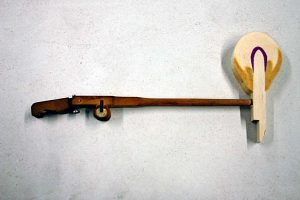
The most common problem associated with a heavy action is incorrect parts selection. Most rebuilt pianos we encounter have the wrong parts installed on them. Too heavy a hammer will cause the piano to play like a truck. Wrong part dimensions destroy the geometry of the action, resulting in a heavy touch-weight.
Believe it or not, we even see piano actions come directly from the factory with incorrect rail configurations making the parts on the action line up incorrectly! Parts selection, geometry analysis, and fit and finish of all the components, will correct the “heavy playing piano” syndrome.
Why are all the keys sticking on my Steinway piano?
The most common cause of sticky keys on vintage Steinway pianos is verdigris on the centerpinning, or pivot points of the action components. For many years, Steinway dipped their action parts in a paraffin oil to act as a preservative for the wood. The result is a chemical reaction with the center pins and felts on the parts, causing verdigris corrosion (see close-up). There is no permanent cure for verdigris. The parts must be replaced to correct this situation.
Also shown is an extreme example of a 1920’s vintage Steinway and Sons grand piano rendered completely unplayable by verdigris. Almost all the hammers are stuck in the air by verdigris seizing the centerpin.
All the parts on my piano are original…why do I need to change the parts?
Pianos are made of wood, metal, felt and leathers. These parts will all change with age. Leather hardens, felt wears out, wood deteriorates, and metal fatigues. As the piano gets older, the combination of all these parts changing results in a piano that will have playability issues (no more controllable pianissimos or fortissimos). There will be noise in the action, noise in the pedals, strings breaking, and a general sloppy sound and play.
We find that many times, a pianist simply becomes used to the piano playing at a substandard level, and they simply adapt in order to make it work. This results in very poor performance. When this same person plays a recently restored instrument, not only does their performance improve, but the joy of playing the piano is restored!
My piano was “rebuilt” about 20-30 years ago, but it doesn’t sound or play right…what’s wrong?
The simple answer is that since about 1990 on, we have been living in the golden era of piano rebuilding. As rebuilders, we have the best resources ever to obtain and use the highest quality piano parts ever produced for the piano industry. This was not true in the 1960’s through 1980’s. Many times, there was only one choice in a piano component, and it was usually wrong.
Even with the best of intentions, piano rebuilders during that time period would have to compromise, and make things work (whether they fit or not). This leaves many consumers with the decision to rebuild their piano (again), with proper materials and workmanship. The advantages are now far better.
I found a GREAT deal on a used, rebuilt Steinway…should I buy it?
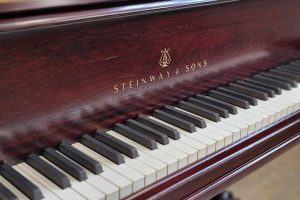
Buying a used vintage Steinway can be one of the most stressful experiences a consumer can go through. The used piano business is not unlike the used car business. Many sellers, whether intentionally or not, misrepresent the facts about used pianos. The old saying, “You get what you pay for,” usually rings true when buying a used rebuilt piano.
Attention to detail is not something that can be done to a piano for a low price. There are MANY more poorly restored Steinway’s in the used marketplace than good ones. In general, the cheaper the piano, the lower the quality of the instrument. Great care and research should be used when buying a vintage, rebuilt Steinway.
See the project gallery featuring the Steinway piano shown here…
If it is so hard to find a well restored vintage Steinway, what should I do?
We believe one of the best ways to end up with a high quality, properly restored Steinway and Sons, Mason and Hamlin, Bösendorfer, or other high-end piano is to look for a good “core” vintage piano at a reasonable price that has NOT been restored. Then assess the instrument with a QUALIFIED piano rebuilder who can tell you exactly what is needed in order to achieve the result that you are looking for.
Chances are, if the core piano has not been subjected to major flood or fire damage, and the design is modern (usually post 1890’s), you will exceed factory standards in the outcome of the restoration. Even if you need to restore the piano to an “as-new” level involving a new soundboard, new keyset with action, and complete refinishing, your final cost can still be down to one half to two thirds of the cost of a new high-end piano.
If you find a Steinway and Sons or other quality vintage piano you believe may have the potential to become a great instrument, Precision Piano Services can help you determine exactly what it will take to make it happen.
How do I choose a quality piano restoration company?
One of the most daunting tasks for a consumer considering piano restoration is their choice of a piano restoration specialist. Here are a few tips to help guide you in the right direction:
- PLAY the pianos that have been finished by the restoration company. Are there a lot of excuses that come up during the “test drive” of the piano? Are they all not quite finished, or will the actions get easier to play the more you use it? Do they need more tuning or more voicing to sound good? Lots of imaginative excuses should be a red warning flag to anyone considering a restoration with this type of company!
A large facility full of machines, tools, and jigs does not mean skilled technicians are involved. The ultimate touch and tone of a piano are only learned through years of study and practice. A good piano rebuilder should spend YEARS tuning and tone regulating new and used high end instruments in order to hone his/her skills in determining what a piano should truly sound and play like. Ask for reputable references and proof of the technician’s history of piano service. Most of the time, a good rebuilder’s name will come up multiple times and from many different, and well respected tuners, technicians, reputable dealers, and pianists. - Is the emphasis of the company more on selling pianos? As stated above, we believe the most honest advice about restoring pianos comes from those that have no interest in the buying and selling of pianos. If there are “hundreds of used pianos available,” or claims like, “We restore hundreds of pianos per year,” then let the buyer beware.
- Are you comfortable with a large wholesale operation, or is a smaller, more personal environment appealing to you? If your main objective is simply to have the beauty and prestige of a Steinway and Sons piano, regardless of touch or tone, then a large scale wholesale restoration outfit might suit your needs. But, the low price and quick completion time for the restoration will be equal to the disappointing quality of the final result. There is no possible way for high level, concert-ready piano restoration to be performed quickly, or for low price. There is so much intricate detail required to bring pianos that are 50 to 150 years old to an “as new” condition, that low prices and poorly paid laborers simply cannot provide this type of work. You as the consumer must make the best decision that suits your needs.
- Be wary of advertising hype. Statements such as: “Wholesale to the public” and “We beat anyone’s prices” are typical of a company or individual not committed to using proper piano restoration techniques. If a rebuilder is unwilling to invest the effort and expense of restoring a piano properly, the overall result will reduce your fine piano to the level of a cheap imitation.
- Anyone can run a free ad. Classified ads, especially the free online classifieds, are heavily populated with unsavory service providers preying on unsuspecting consumers. Always check credentials for something as valuable as your fine piano. Ask a trusted source for a referral.
- Question everything you read online. The wealth of information available online is staggering. Access to qualified answers to your questions is easily available through forums and other online resources. Unfortunately, the Internet also breeds a lot of pretenders who masquerade as experts. If you’re looking for reliable information, you’ll want to get solid data to back up any claims so you can discern the pretenders from the real experts.
- A professional looking web site can be misleading. We hope you like our web site and consider it to be a nice design. It also shows up high in search results. But there are also other piano restoration companies with nice sites that are easy to find, and not all of them are what they seem. Some of them are better at marketing than they are at piano restoration. No matter who you choose, nothing beats visiting the rebuilder’s studio, verifying they have a passion for fine pianos, and playing the pianos they’ve restored.

